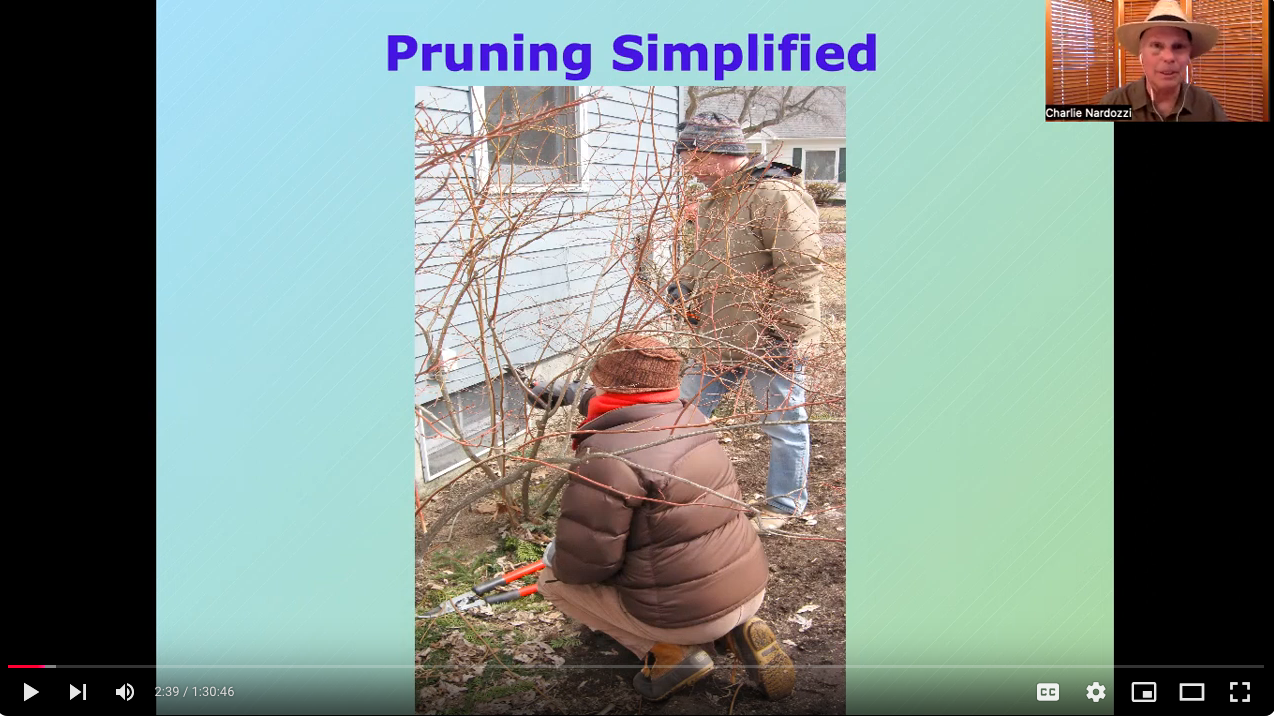Current Newsletter
Charlie’s Early December Newsletter
End of Year Gardening Webinar Sale!

The calendar has turned to December and lots of gardeners are scurrying for the holidays. Whether it be decorating a tree, home or outdoors, planning holiday meals or thinking about holiday gifts, it’s a busy time of year. Let me help with one of those items. Each year I put my gardening webinars on sale for the holidays. These 21 gardening webinars are ones I’ve presented in the past and recorded. I keep adding to the library each year.

This year I’ve created 3 gardening webinar sale packages for you to enjoy. As you know, webinars are a great way to get gardening information in a user friendly way. Once you purchase one of my webinars you can watch it whenever you like, as many times as you like. For those who have watched or attended my webinars in the past, you know I load them with useful information and practical gardening advice. Winter is a great time of year to hone your knowledge on gardening topics such as Soils and Mulches or Pollinator Gardening, or dive into a new topics such as Growing Flowering Vines or Growing Summer Bulbs.

The three packages are Organic Food Gardening, All About Flowering Gardening and the Whole Gardening Webinar Library. Take a look and consider purchasing a package as a gift for the holidays or just for yourself. The sale runs until the end of December.
Until next time I’ll be seeing you, in the garden.
Charlie
Organic Food Gardening Webinar Sale Package

One of my most popular packages is the Organic Food Gardening Package. This package features 7 food gardening related webinars including Ecological Gardening and Companion Planting, No Dig Gardening and Raised Beds, Foodscaping/Edible Landscaping, Organic Pest Controls, Soils and Mulches, All About Berries and Small Space Vegetable Gardening. The price is $39.99. That’s a $40 saving from if you purchased the webinars individually.
All About Flowering Gardening Webinar Sale Package

Everyone loves flower gardening and there’s so many ways to incorporate flowering perennials, shrubs and trees into your landscape. This package features 10 flower related gardening webinars which include Grow a Pollinator Gardening, Container Gardening Revolution, Gardening for the Birds, Pruning Trees and Shrubs, Natives, Invasives and Weeds, Growing Flowering Vines, Lilacs and Hydrangeas, Plants for Problem Places, All about Houseplants, and Growing Summer Bulbs. The price is $59.99 for the 10 webinars. That’s one-half the usual price from if you purchased the webinars individually.
Learn more and purchase The All About Flowering Gardening Webinar Package here
Whole Gardening Webinar Library Sale Package

If you really love webinars and want to watch a bunch of them this winter, there’s always the Whole Gardening Webinar Library Package. This is all 21 webinars including the latest ones. You don’t have to watch them all at once. Once you purchase any of these packages, you have the links forever. The price for the Whole Gardening Webinar Library Package is $149.99. That’s a $100 saving from if you purchased the webinars individually.
Learn more and purchase The Whole Gardening Webinar Library Sale Package here



